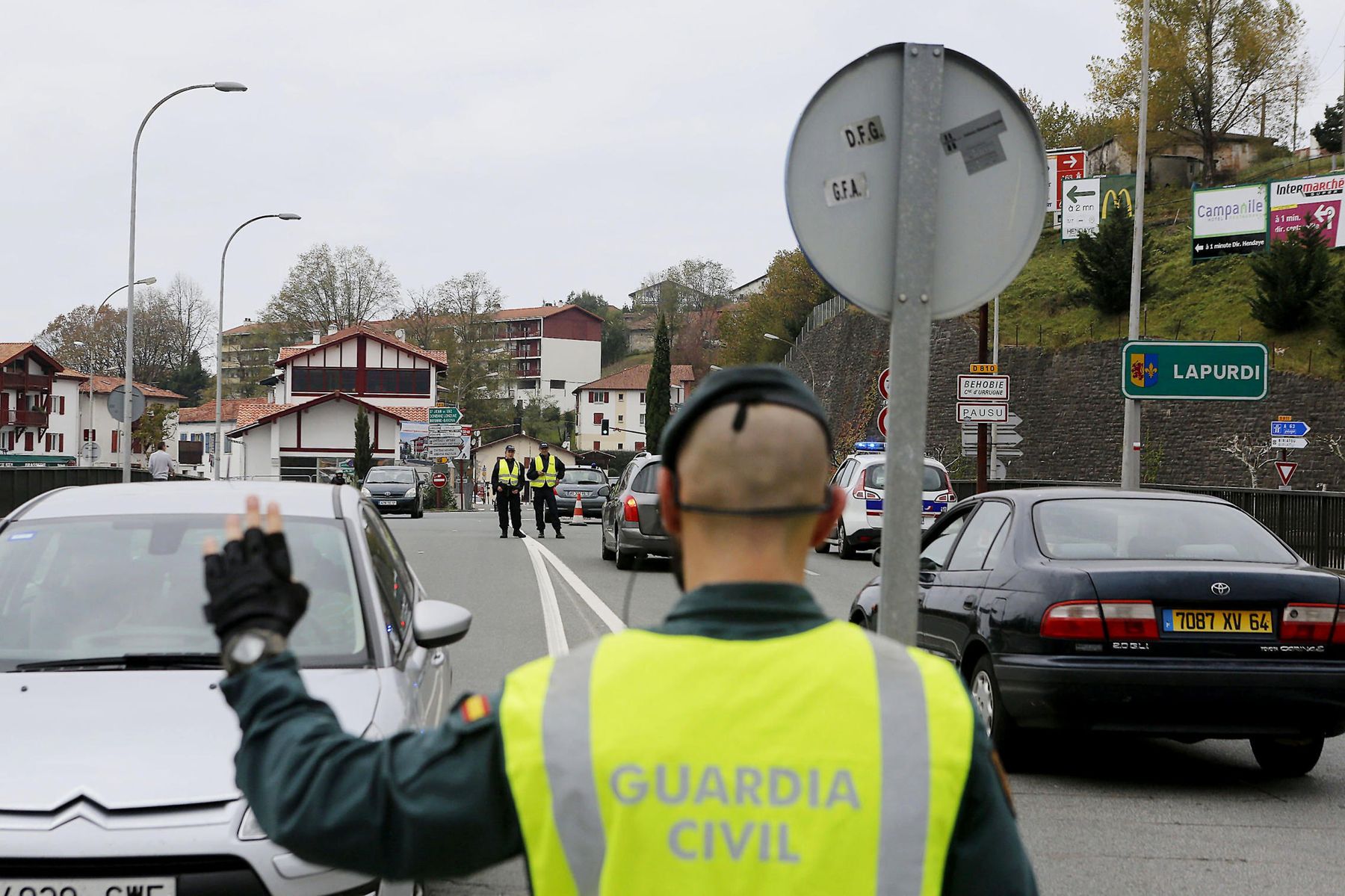Stone Wheel of Time in the Cathedral of Pamplona
- "Pictura est laicorum literatura," wrote Umberto Eco in Il nome della rosa. People speak more through images than words. The narrative function of art is notable in the images of the Middle Ages, although its interpretation can be difficult with current eyes. In the cloister of the Cathedral of Pamplona, about to start the new year, we have an unbeatable opportunity to see how time and work mixed up in the mentality of the time.

Hidden behind its neoclassical facade, the Cathedral of Pamplona is witness to more than two thousand years of history. Since the 1950s, archaeological excavations carried out both in the temple and in surrounding buildings have revealed vestiges of several times: Location of the Vascones on the Arga in the Iron Age, planned the urbanism of the city of Pompelo during the Roman Empire, the process of Christianization of Late Antiquity and the cultural influences of the Visigodos, Arabs and Francos in the High Middle Ages... The oldest vestiges of the church date back to the 9th century.-X. They are centuries old, but in 924 it was completely destroyed by order of the Cordobese caliph Abd ar-Rahman III. It was rebuilt in Romanesque style in the 12th century.
Looking up in the cloister vaults, scattered here and there, the visitor will
find images of the everyday life of a rural society, adorned with names of months written in Latin.
In 1086, when St. Augustine's rule was established, the service of the cathedral was handed over to a monastic community, such as Lei or Iratxe, and began to receive housing in the area. Thus, the cloister was erected at the end of the thirteenth century and the beginning of the fourteenth century, in the Gothic style that was spreading in Europe, and its resemblance to that of the Baiona Cathedral is surprising. On 1 July 1390 the cathedral collapsed and was rebuilt in Gothic style, giving rise to the entire interior of the current building.
Most of the Cathedral’s buildings were created thinking only of being seen by the canonigos. And it is precisely there that there are some of the most interesting artistic manifestations of the Medieval Pamplona, for the enjoyment of the intellectual elite of the time. But they also show us visions and ways of life of the world back then.
One of the most beautiful examples was studied almost a century ago by the ethnographer Julio Caro Baroja: if we look up in the cloister vaults, scattered over here and there, the visitor will find images of the everyday life of a rural society, adorned with names of months written in Latin. From a leap, it will complete a one-year cycle in which it will discover how the Navarre society of the 14th century understood time as a cyclical reality, as a wheel marked by seasonal work.
Eleven months cycle
The allegorical images of the months appear in the keys of the vaults surrounding the cloister. There are eleven in total, from January to December, in the absence of June. Most are polychrome with intense blue and gold shades, but many of them have suffered severe wear. The visitor will need to be attentive to discover all the details of each scene at a distance.
January
The Roman god Jano is represented, with two heads, with a key in each hand. They said he could look forward and backward at the same time, and that's why they considered him as protector of doors and hallways. When identifying the month of January – or in Latin ianuarius – with it, after the winter solstice the relationship between the old and the new cycle is emphasized.

February
It is known that the winter month can be the coldest and most ungentle. Maybe that's why he's represented as a man who takes off the shoe and heats his foot, sitting next to the fire. He looks tired and wears poor clothes, he's a simple citizen.

March
A classic work this month: a man popping vineyards. Wine activity was fundamental in several counties of Navarre. In Pamplona, txakoli was produced around the Arga until the second half of the twentieth century. On Mount Ezkaba there are still some remains of the old vine.
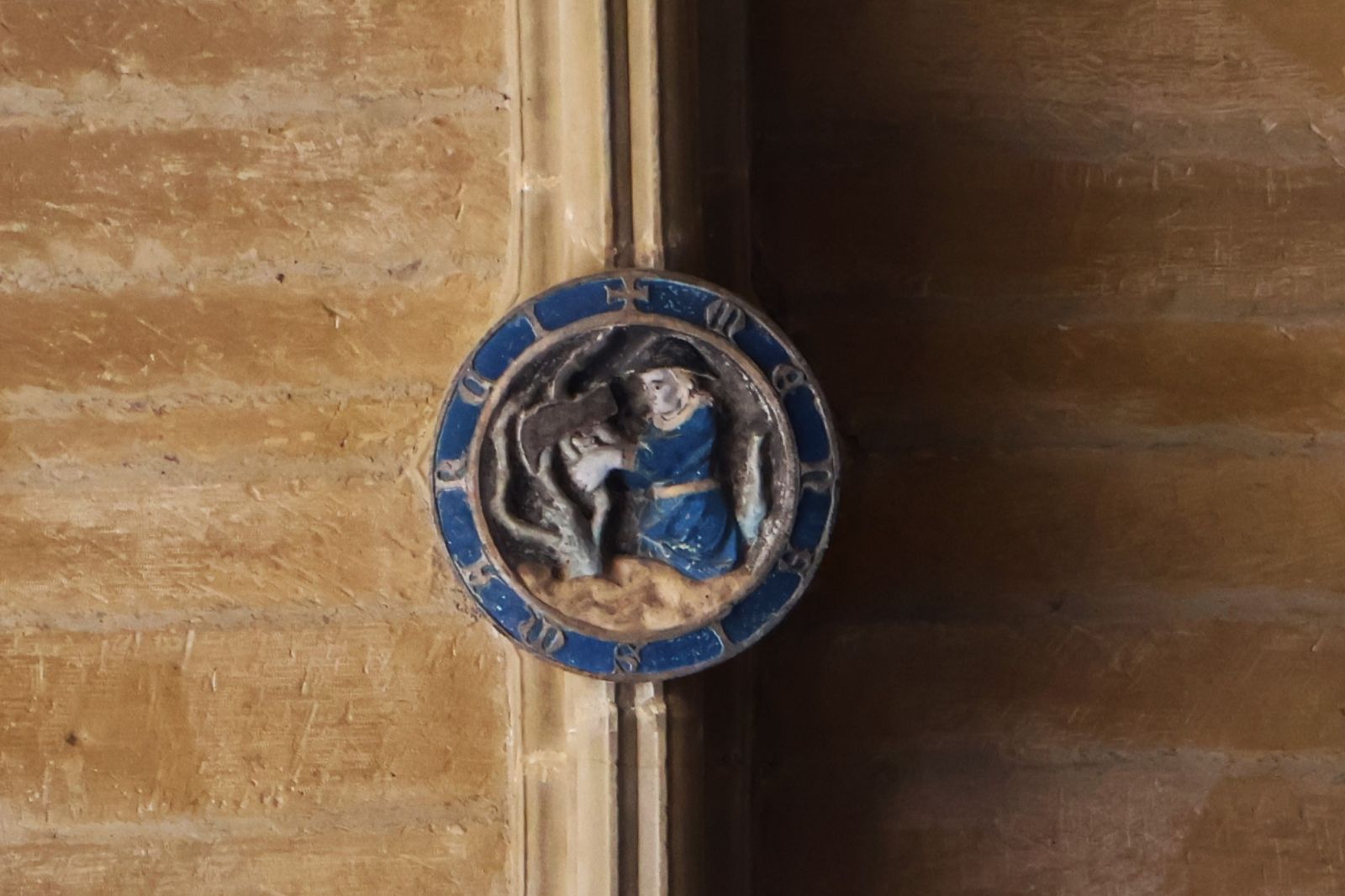
April
With spring, the vegetation awakens. We can see a young man -- it's not clear whether he's a man or a woman -- with a bunch of leaves on each hand. Around it, oak leaves and acorns. We can imagine the mountains and forests surrounding the leading city, naked in winter and watching in spring.

May
There's a gentleman with elegant clothes. In one hand he carries a bouquet of flowers, witness a spring in full; let us remember that in some dialects he is also known as lorail. In the other hand, the hawk announced the beginning of the hunting season that the nobles liked so much.

July
July is a month of harvest and the figure's man is picking yellow wheat with a sickle. Bread was a staple of medieval society. Summer, therefore, was a very important time to secure food all year round.

Agorrila
Once the cereal was harvested, straw and grain were separated and flour was made with the grain. A neighbor appears in the yard, pulling a sledge or a mare with two horses or mares, stepping the cereal and separating the grain. In the area of Pamplona there are toponyms that reflect the old location of the eras, such as Las Eras – the old name of Estafeta Street – or Larraintxiki.

September
The work at the end of summer is to collect the fruit of the vineyards, to start the must in the lagars or lagars and then to introduce it into the kupelas to cure the wine. It's what the person in the picture does. These tasks ended with great festivities before the beginning of the fall cycle.
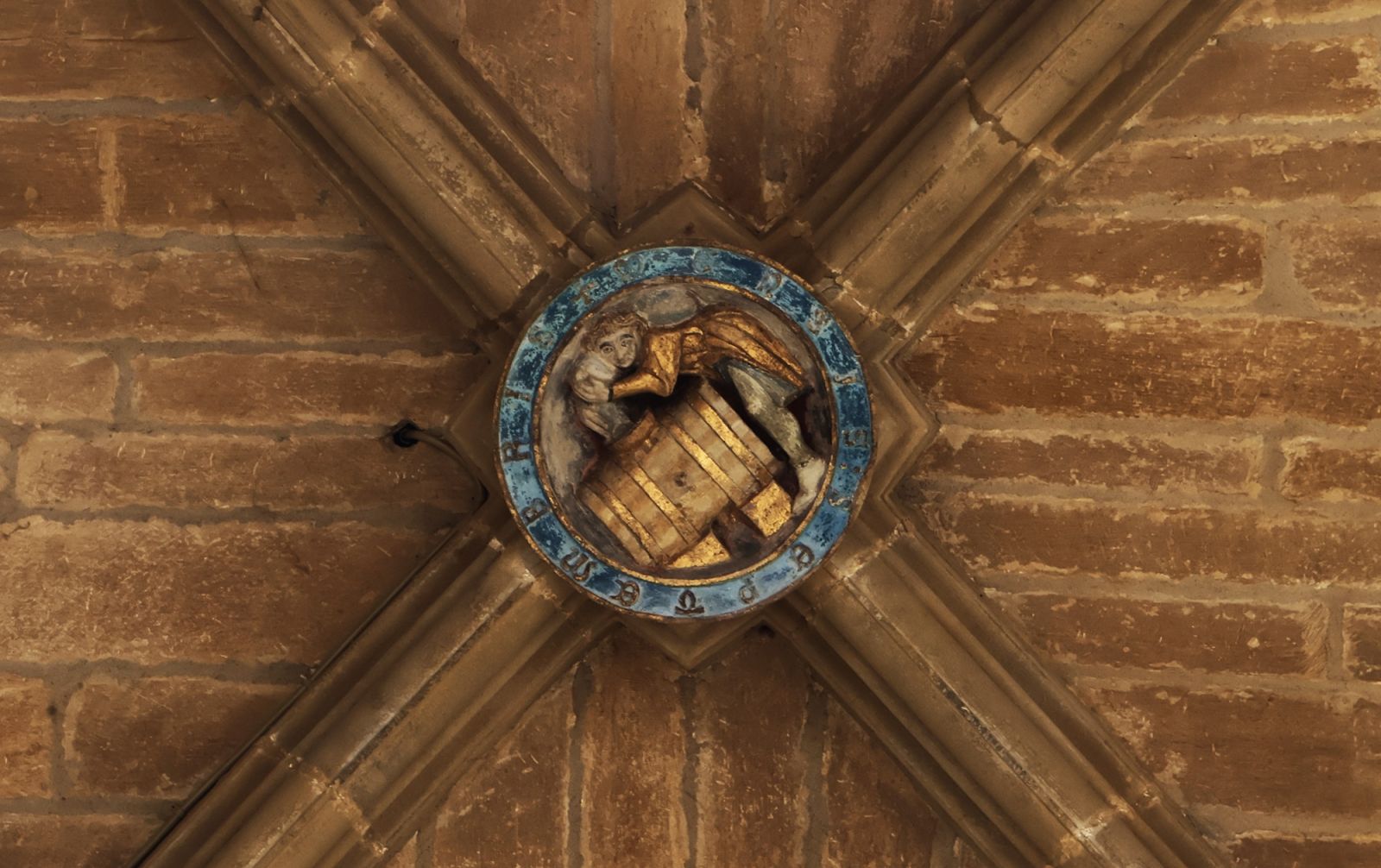
October
October marks the beginning of the cerealist cycle. We see a woman turning to the earth with a plough pulled by two cows. From behind, another woman grabs a grain from the bag and sows it in the air. These jobs radically changed the shape and color of the landscape, while the days became shorter.
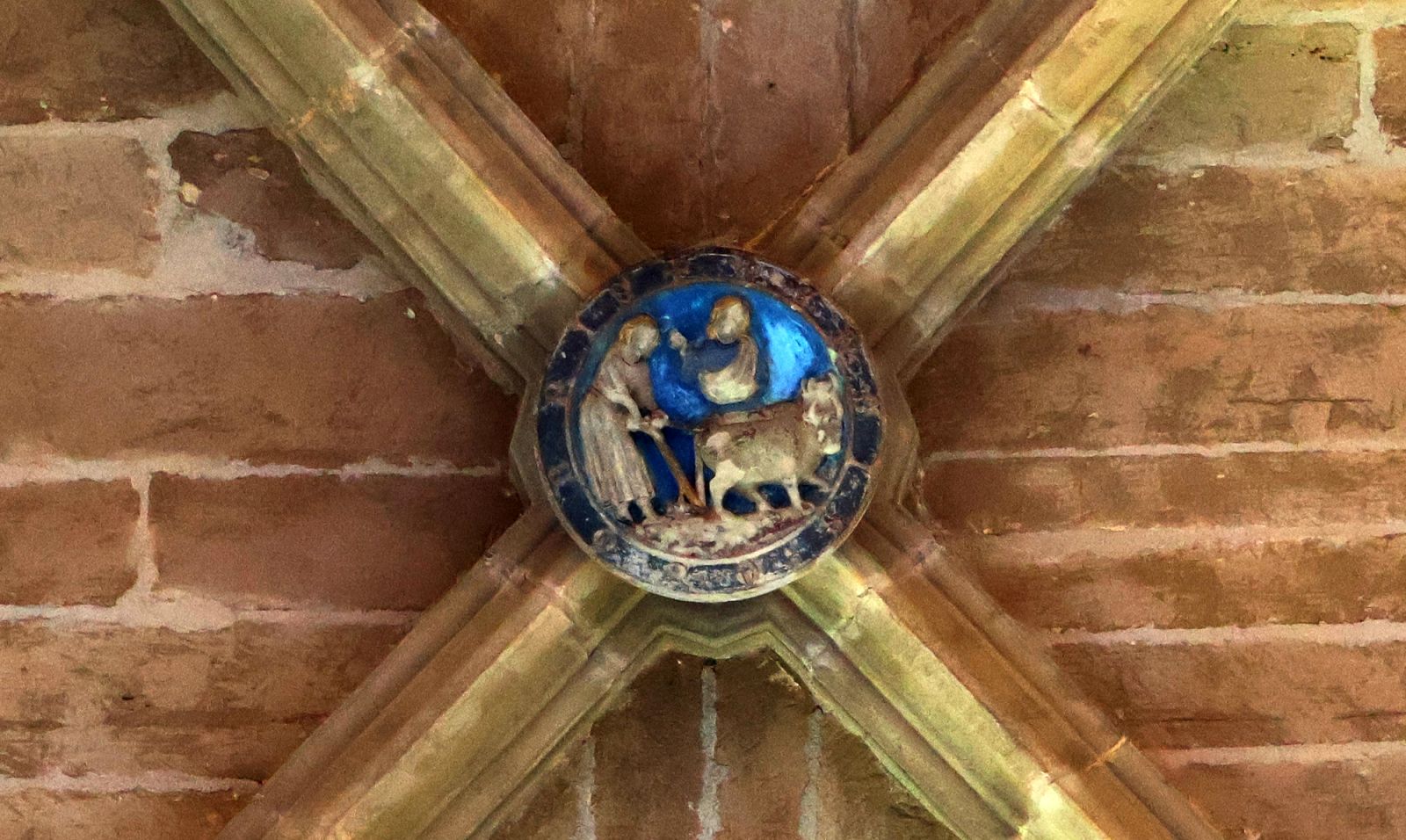
November
We can see a dying woman with an axe. November 11 was the usual date to kill the pig: St. Martin's day ended with pre-winter work. Preserved sausages between salt and fat offered protein throughout the year. In this way, a number of products were created that today are considered very autochthonous.

December
A couple dressed in rich clothes sits on the table, while another person serves food. This is a Christmas feast, one of the most important festivities on the Christian calendar and marking the end of the year. End of one cycle and start of the other.
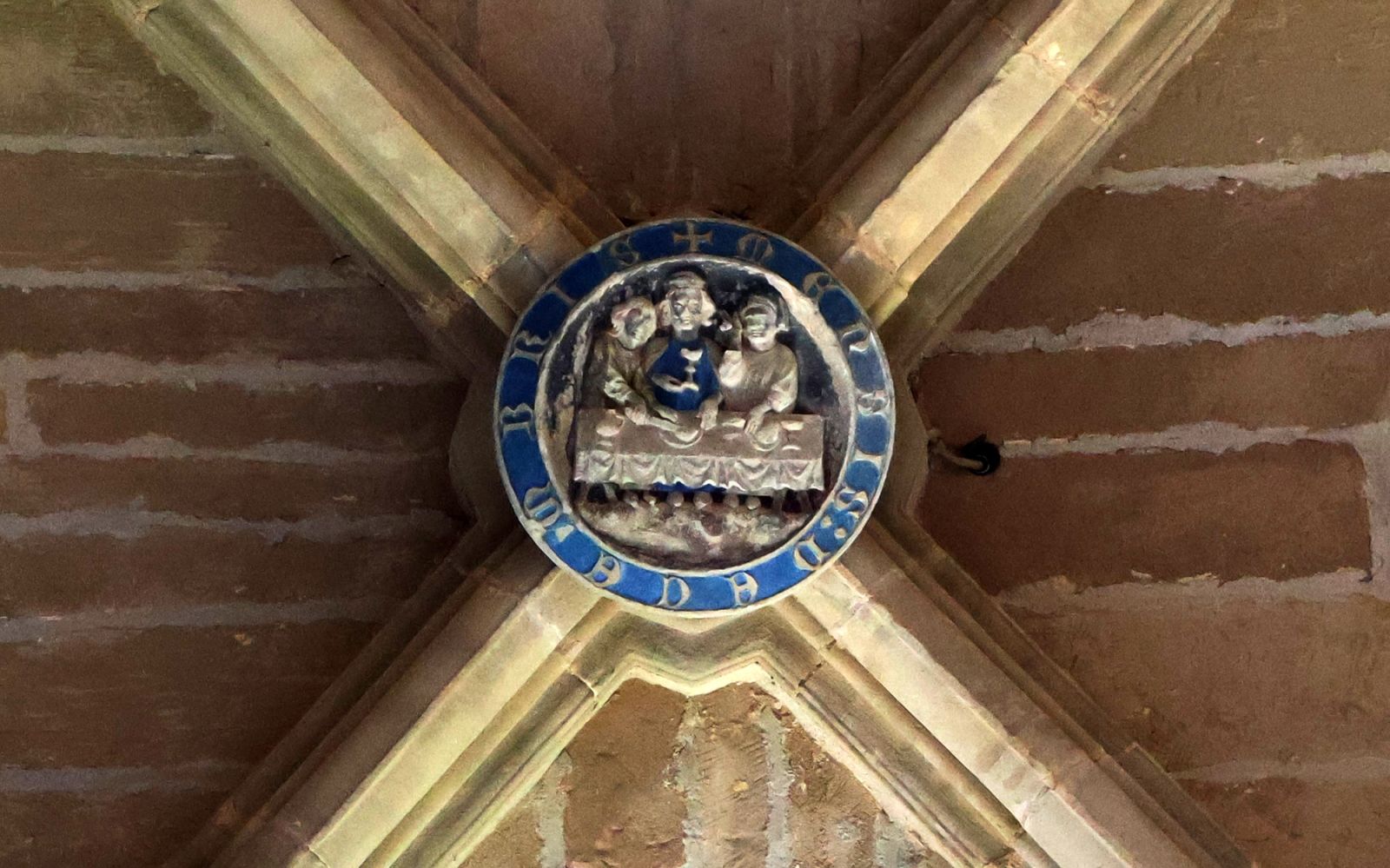
Linear A is a Minoan script used 4,800-4,500 years ago. Recently, in the famous Knossos Palace in Crete, a special ivory object has been discovered, which was probably used as a ceremonial scepter. The object has two inscriptions; one on the handle is shorter and, like most of... [+]
Londres, 1944. Dorothy izeneko emakume bati argazkiak atera zizkioten Waterloo zubian soldatze lanak egiten ari zela. Dorothyri buruz izena beste daturik ez daukagu, baina duela hamar urte arte hori ere ez genekien. Argazki sorta 2015ean topatu zuen Christine Wall... [+]
Kirola eta oroimena uztartuko dituzte, bigarrenez, mendi-martxa baten bitartez. Ez da lehiakorra izanen, helburua beste bat delako. La Fuga izeneko mendi martxak 1938ko sarraskia gogorarazi nahi du. Ezkabako gotorlekuan hasi eta Urepelen amaituko da. Maiatzaren 17an eginen dute.
Bilbo, 1954. Hiriko Alfer eta Gaizkileen Auzitegia homosexualen aurka jazartzen hasi zen, erregimen frankistak izen bereko legea (Ley de Vagos y Maleantes, 1933) espresuki horretarako egokitu ondoren. Frankismoak homosexualen aurka egiten zuen lehenago ere, eta 1970ean legea... [+]
Fusilamenduak, elektrodoak eta poltsa, hobi komunak, kolpismoa, jazarpena, drogak, Galindo, umiliazioak, gerra zikina, Intxaurrondo, narkotrafikoa, estoldak, hizkuntza inposaketa, Altsasu, inpunitatea… Guardia Zibilaren lorratza iluna da Euskal Herrian, baita Espainiako... [+]
Deportazioaren Memoriarako Euskal Koordinakundeak aintzat hartu nahi ditu Hego Euskal Herrian jaio eta bizi ziren, eta 1940tik 1945era Bigarren Mundu Gerra zela eta deportazioa pairatu zuten herritarrak. Anton Gandarias Lekuona izango da haren lehendakaria, 1945ean naziek... [+]
Guardia Zibilaren historia bat - Hemendik alde egiteko arrazoiak izenburupean, datorren astean argitaratuko dugun 305. LARRUN aldizkariaren pasarte batzuk dira ondorengoak, erakunde armatuaren sorrera garaietan girotutakoak.
Iazko uztailean, ARGIAren 2.880. zenbakiko orrialdeotan genuen Bego Ariznabarreta Orbea. Bere aitaren gudaritzaz ari zen, eta 1936ko Gerra Zibilean lagun egindako Aking Chan, Xangai brigadista txinatarraz ere mintzatu zitzaigun. Oraindik orain, berriz, Gasteizen hartu ditu... [+]
Eskultura grekoerromatarrek bere garaian zuten itxurak ez du zerikusirik gaurkoarekin. Erabilitako materiala ez zuten bistan uzten. Orain badakigu kolore biziz margotzen zituztela eta jantziak eta apaingarriak ere eransten zizkietela. Bada, Cecilie Brøns Harvard... [+]
Aranzadi Zientzia Elkarteko Etnografia Sailaren zuzendari berria da Maite Errarte Zurutuza (Beasain, 1995), urrian Fermin Leizaolaren lekukoa hartu ondoren. Kultura materiala aztertzen jarraitzeko beharra azpimarratu du, gizartearen memoria eta bizimodu aldaketak erregistratzeko... [+]
Japonia, XV. mendea. Espioitzan eta hilketa ezkutuetan espezializatutako eliteko talde militarra sortu zen. Edo horixe uste du behintzat Stephen Turnbull historialari britainiarrak. Beste aditu batzuen ustez, askoz lehenago sortu ziren ninjak, duela 2.300-2.500 urte inguru. Eta... [+]



















